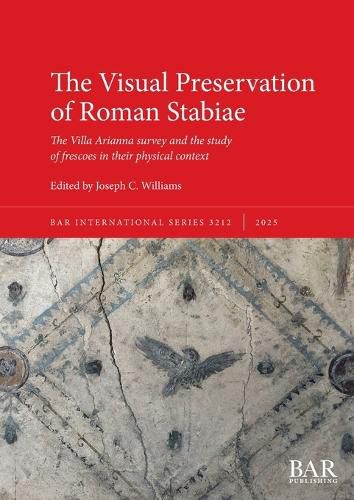Readings Newsletter
Become a Readings Member to make your shopping experience even easier.
Sign in or sign up for free!
You’re not far away from qualifying for FREE standard shipping within Australia
You’ve qualified for FREE standard shipping within Australia
The cart is loading…






The Villa Arianna was one of the largest and most opulent of the villas of Stabiae, a wealthy Roman settlement just south of Pompeii. Like its neighbor, Stabiae was buried by the eruption of Mount Vesuvius in 79 CE, ending its ancient habitation but preserving its remarkable houses. The Visual Preservation of Roman Stabiae presents the first ever comprehensive survey of the decorated walls in the excavated parts of the villa. Based on research undertaken between 2011 and 2024 by faculty and students in the programs of Architecture, Art History, and Archaeology at the University of Maryland, it illustrates 113 in situ frescoes using an innovative method that combines hand-drawing with precise digital measurement. By opting to represent the frescoes together with their architectural context, and not as isolated images, it brings fresh analysis to the way Roman wall paintings interacted with their physical environments and with viewers.
$9.00 standard shipping within Australia
FREE standard shipping within Australia for orders over $100.00
Express & International shipping calculated at checkout
Stock availability can be subject to change without notice. We recommend calling the shop or contacting our online team to check availability of low stock items. Please see our Shopping Online page for more details.
The Villa Arianna was one of the largest and most opulent of the villas of Stabiae, a wealthy Roman settlement just south of Pompeii. Like its neighbor, Stabiae was buried by the eruption of Mount Vesuvius in 79 CE, ending its ancient habitation but preserving its remarkable houses. The Visual Preservation of Roman Stabiae presents the first ever comprehensive survey of the decorated walls in the excavated parts of the villa. Based on research undertaken between 2011 and 2024 by faculty and students in the programs of Architecture, Art History, and Archaeology at the University of Maryland, it illustrates 113 in situ frescoes using an innovative method that combines hand-drawing with precise digital measurement. By opting to represent the frescoes together with their architectural context, and not as isolated images, it brings fresh analysis to the way Roman wall paintings interacted with their physical environments and with viewers.